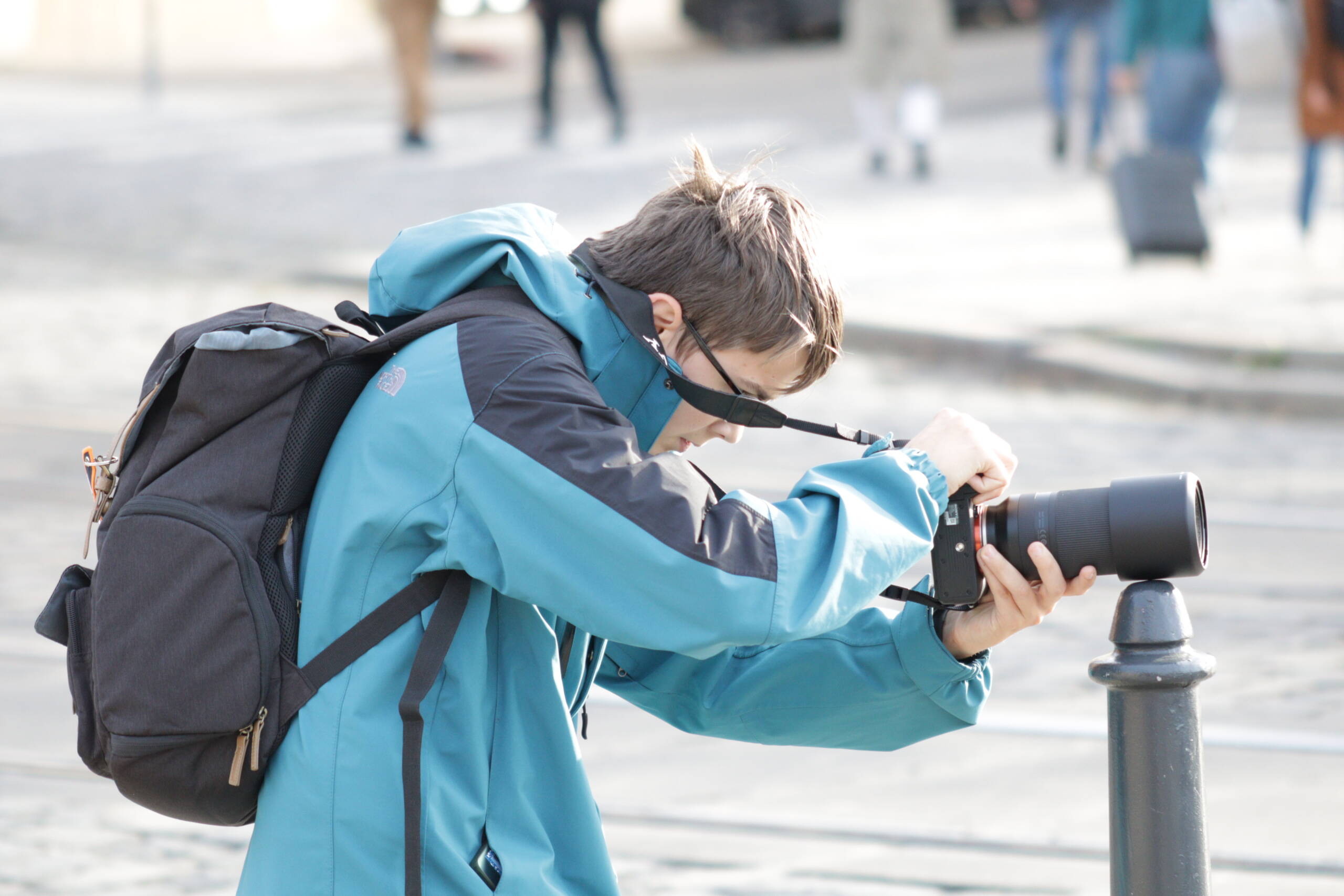There’s a certain honesty in seeing someone hunched over, carefully balancing their camera against whatever surface is available, trying to keep it steady. This photo captures exactly that—an improvisational moment in the life of a photographer who doesn’t have a tripod at hand but still refuses to let a good shot go. The subject here is leaning forward, with a backpack weighing slightly on one shoulder, steadying their camera against a metal post as if it were a makeshift tripod. It’s not glamorous, but it works, and that’s really the essence of travel and street photography: solving problems with whatever is in front of you.

When you’re out shooting in a city, it’s not always practical to carry a tripod. They’re heavy, attract attention, and in some places, they’re simply not allowed. That’s when the environment becomes your best friend. Posts, railings, benches, walls—any surface can become a stabilizer. The trick is learning how to adapt your body and camera to these surfaces. Here, the photographer’s crouch and the forward lean create stability from three points of contact: feet firmly on the ground, body pressed in for balance, and the camera anchored to the post. It may not look elegant, but stability is born out of tension and intention.
Of course, there are risks. Metal posts and stone walls can scratch your gear if you’re careless, and not every surface is at the right height. Sometimes you’ll find yourself awkwardly contorted just to line up a shot. But there’s a kind of discipline in working within these constraints—it forces you to be inventive. That creativity often leads to perspectives you wouldn’t have considered if you had just extended tripod legs and framed everything at eye level.
The lightness of travel photography often lies in what you don’t carry. Without a tripod, you’re freer to move, quicker to react, and less of a spectacle in crowded streets. A jacket, a backpack, even your own arm pressed tight against your torso can work as stabilizers. A fast lens or higher ISO helps too, but nothing replaces the instinctive knowledge of how to use your surroundings. This image is a perfect demonstration of that—resourcefulness in action, and proof that sometimes the best tripod is the one you improvise.
Leave a Reply